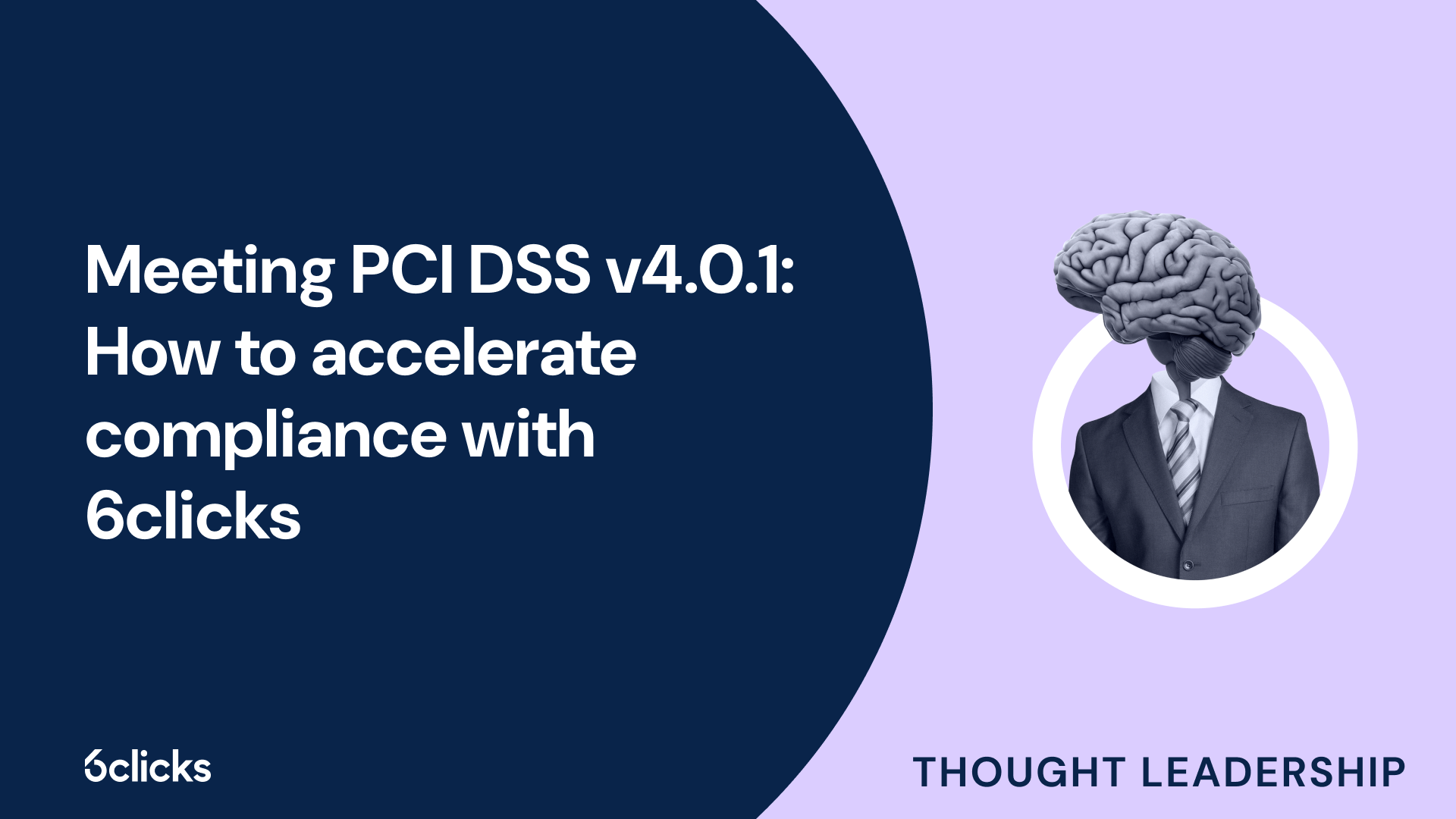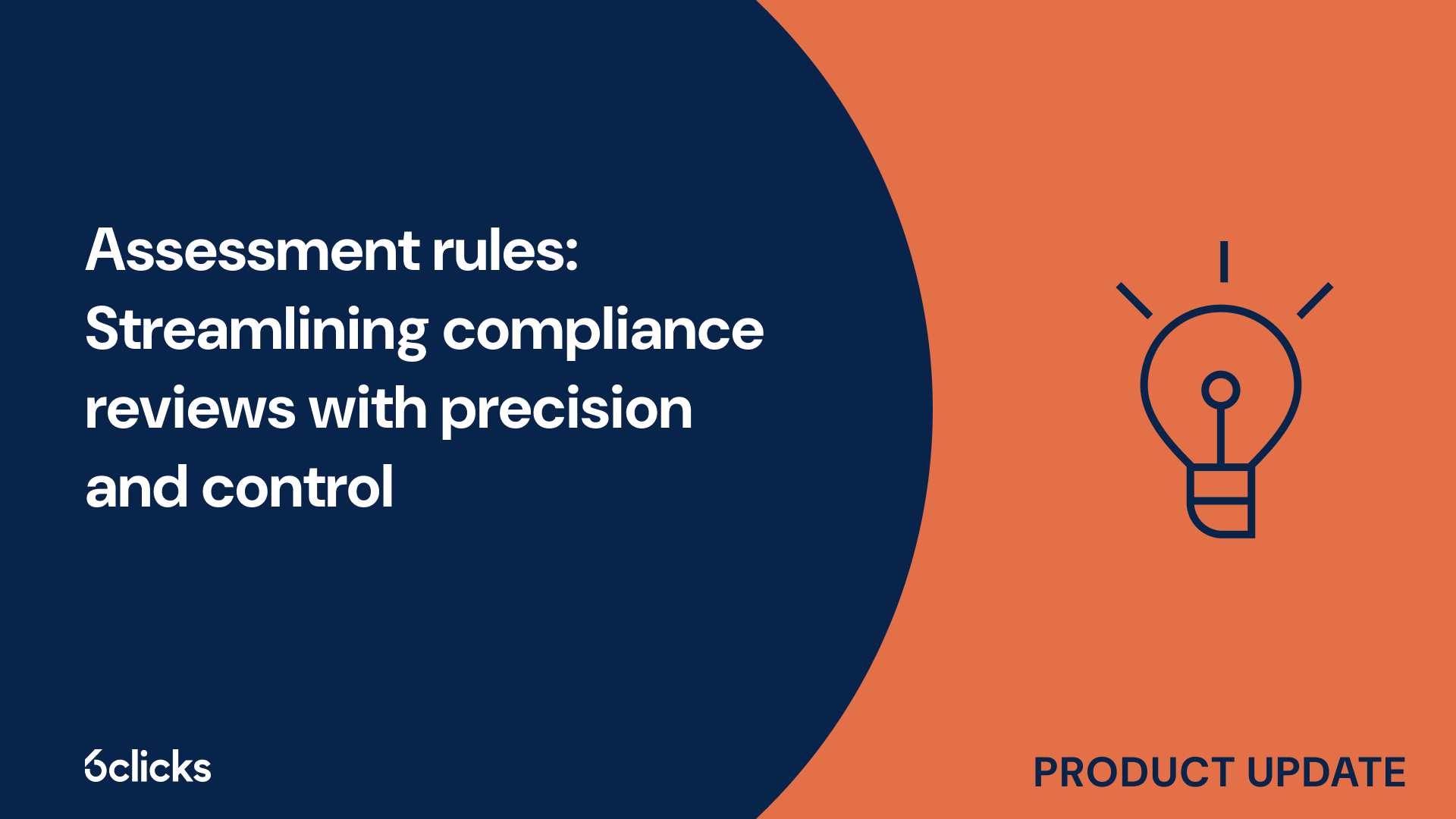The GRC buyer’s guide for 2025: Building resilience with AI-powered, federated solutions
Discover the ultimate GRC buyer's guide for 2025! Uncover how AI-powered, federated solutions transform compliance and security management for industries like government, aerospace, banking, and more. Learn about centralized control, continuous compliance, and advanced cyber GRC capabilities. Download now!
-1.png?width=200&height=249&name=Group%20193%20(1)-1.png)
The GRC buyer’s guide for 2025: Building resilience with AI-powered, federated solutions
What is HITRUST?
HITRUST, standing for Health Information Trust Alliance, is a certifiable framework that provides healthcare organizations in the healthcare industry with an efficient approach to managing regulatory requirements and achieving regulatory compliance. With its comprehensive information risk management and security control baselines, HITRUST CSF is considered the gold standard for security standards in the healthcare industry. This integrated approach takes into account the unique security risks faced by healthcare organizations, including the adoption of health information systems and the use of cloud service providers. HITRUST CSF certification involves a rigorous assessment process that evaluates an organization's security posture and ensures its compliance with the necessary regulatory standards. By adopting a risk-based approach and considering the organization's specific risk profile, HITRUST enables healthcare organizations to enhance their security programs and effectively manage their risk exposure. HITRUST CSF certification is widely recognized and trusted by healthcare providers, government agencies, financial services, and other business partners, making it a vital component of a comprehensive framework for regulatory compliance in the healthcare industry.
What is the HITRUST certified security framework (CSF)?
The HITRUST Certified Security Framework (CSF) is a comprehensive and certifiable framework designed specifically for the healthcare industry. It serves as a gold standard for regulatory requirements and provides healthcare organizations with a robust and efficient approach to managing their security and compliance posture.
As the healthcare industry continues to face increasing challenges and risks in protecting personal health information, the HITRUST CSF offers a comprehensive framework that integrates multiple security controls from various compliance frameworks. This allows healthcare organizations to address a wide range of security risks in a standardized and systematic manner.
The HITRUST CSF includes a set of requirement statements and security control baselines that help organizations identify and assess their security risks and develop a comprehensive information risk management program. By adopting a risk-based approach and considering the unique regulatory factors within the healthcare industry, organizations can strengthen their security posture and ensure compliance with regulatory standards.
The HITRUST CSF certification process involves an independent assessment of an organization's compliance posture, ensuring that it meets the necessary requirements and aligns with the framework's security standards. This certification provides healthcare providers, business associates, and cloud service providers with the assurance that they are adopting a comprehensive and integrated approach to managing security and compliance.
The basics of HITRUST CSF
HITRUST CSF, or the HITRUST Common Security Framework, is a comprehensive framework designed to help healthcare organizations address the complex and evolving security challenges they face. With the increasing importance of protecting personal health information and complying with regulatory requirements, HITRUST CSF offers a certifiable framework that integrates multiple security controls from various compliance frameworks. By adopting a risk-based and integrated approach, organizations can assess their security risks, strengthen their security posture, and ensure regulatory compliance. The HITRUST CSF certification process involves an independent assessment of an organization's compliance posture, providing assurance that it meets the necessary requirements and aligns with the framework's security standards. This certification is essential for healthcare providers, business associates, and cloud service providers looking to demonstrate their commitment to comprehensive information risk management and protect sensitive healthcare data. Overall, HITRUST CSF provides a gold standard for the healthcare industry, offering a unified and efficient approach to managing security and compliance.
Overview of HITRUST CSF requirements
HITRUST CSF (Common Security Framework) is a certifiable framework specifically designed for the healthcare industry to guide organizations in managing regulatory requirements and effectively addressing security risks. It provides a comprehensive approach to regulatory compliance and risk management, serving as the gold standard for security controls in healthcare organizations.
The HITRUST CSF consists of a set of control specifications that cover various aspects of security, including data protection, privacy controls, and risk management. These control specifications are designed to address the unique security challenges faced by healthcare organizations, such as the adoption of health information systems and the use of cloud service providers.
To meet the HITRUST CSF requirements, healthcare organizations must establish a mature and efficient security program that aligns with their risk profile. This involves implementing the necessary security controls and demonstrating compliance with the requirement statements outlined in the framework.
Guidance on assessment is provided by the HITRUST Alliance, which offers an assessment process to evaluate an organization's security posture and determine its compliance with the HITRUST CSF. Additionally, the framework provides standard mapping to other compliance frameworks and regulatory standards, making it easier for organizations to demonstrate their compliance posture to business partners, government agencies, and other stakeholders.
Scope and control categories of the CSF
The HITRUST CSF provides a comprehensive and certifiable framework for healthcare organizations to assess and manage their security posture. It consists of 14 control categories, each addressing a specific area of security concern within the healthcare industry. These control categories encompass a total of 49 objectives and 156 control references.
Each control category within the HITRUST CSF has a designated objective, which represents the desired outcome or goal. The objectives are supported by multiple specifications, which define the specific requirements that organizations must meet in order to achieve compliance. These specifications outline the necessary controls, processes, and policies that healthcare organizations must implement to mitigate security risks.
The HITRUST CSF also allows for different levels of implementation for control requirements. Organizations can tailor their approach to their specific risk profile and maturity level by implementing controls at either the foundational, managed, or advanced level. This provides flexibility for organizations to gradually improve their security programs and reach higher levels of security maturity.
By addressing a wide range of security concerns and providing clear objectives and specifications, the HITRUST CSF offers healthcare organizations an efficient approach to managing their security programs and meeting regulatory requirements. It enables organizations to enhance their security posture, protect personal health information, and maintain a high level of regulatory compliance.
Types of compliance standards covered by the CSF
The HITRUST CSF (Common Security Framework) integrates various compliance standards to provide a comprehensive framework for managing security controls in the healthcare industry. It incorporates a wide range of regulatory requirements and compliance standards to address the unique needs and challenges of healthcare organizations.
The HITRUST CSF covers numerous compliance standards, including but not limited to:
- HIPAA (Health Insurance Portability and Accountability Act): The CSF aligns with HIPAA's security, privacy, and breach notification requirements to ensure the protection of personal health information (PHI).
- NIST (National Institute of Standards and Technology) Cybersecurity Framework: The CSF integrates the NIST framework to establish a risk-based approach to managing cybersecurity risks.
- ISO (International Organization for Standardization) Standards: The CSF incorporates various ISO standards, such as ISO 27001 and ISO 27002, to provide a robust cybersecurity framework for healthcare organizations.
- PCI DSS (Payment Card Industry Data Security Standard): The CSF includes requirements to protect payment card data for healthcare organizations that process electronic payments.
- COBIT (Control Objectives for Information and Related Technologies): The CSF leverages COBIT to establish governance and risk management processes for effective control implementation.
By integrating these compliance standards, the HITRUST CSF offers a comprehensive and efficient approach to managing security controls in the healthcare industry. This integrated framework helps healthcare organizations streamline their compliance program, minimize redundant efforts, and ensure consistent adherence to multiple regulatory requirements.
What are security controls?
Security controls are an essential component of the HITRUST CSF (Common Security Framework) certification process. These controls are measures put in place by healthcare organizations to ensure compliance with regulatory requirements and protect the confidentiality, integrity, and availability of sensitive data.
Security controls play a vital role in safeguarding stakeholders' interests by mitigating risks, preventing unauthorized access, and ensuring the overall security posture of the organization. They help in identifying vulnerabilities, establishing safeguards, and implementing policies and procedures to defend against potential threats.
Examples of security controls that organizations need to implement include access controls, encryption, firewall protection, intrusion detection systems, incident response plans, and employee training programs. Access controls restrict unauthorized personnel from accessing sensitive information. Encryption ensures that data is securely transmitted and stored. Firewalls establish barriers between internal and external networks. Intrusion detection systems monitor network traffic for potential threats. Incident response plans outline the steps to take in case of a security incident. Employee training programs educate staff about security best practices and raise awareness about potential risks.
By implementing these security controls, organizations can enhance their compliance posture, protect sensitive data, and maintain the trust of their stakeholders. HITRUST provides a comprehensive framework that guides organizations on the adoption and implementation of these controls, resulting in a higher level of security and assurance.
How many security controls are there in HITRUST?
HITRUST, a widely recognized certifiable framework in the healthcare industry, provides healthcare organizations with a comprehensive and efficient approach to managing their security programs. As part of the certification process, organizations must adhere to a set of regulatory requirements and compliance frameworks to ensure their security controls are in line with the gold standard in the industry. The HITRUST CSF (Common Security Framework) includes a wide range of security controls that are designed to address the unique security risks faced by healthcare organizations. These controls cover various aspects of security, including access controls, encryption, incident response plans, and employee training programs, among others. By implementing these controls, healthcare organizations can strengthen their security posture and protect the personal health information of their patients, as well as meet the requirements of regulatory standards and compliance programs. The HITRUST CSF offers a risk-based approach that helps organizations assess their risk profile and establish a robust and comprehensive information risk management program. With its integrated approach and broad adoption in the industry, HITRUST provides a valuable framework for healthcare organizations to enhance their security controls and ensure the privacy and security of sensitive health information.
Number of security controls used by organizations
The HITRUST CSF (Common Security Framework) is a comprehensive certifiable framework that provides healthcare organizations with a risk-based approach for managing and enhancing their security posture. It includes a set of controls that help organizations address various security risks and comply with regulatory requirements.
The number of security controls included in the HITRUST CSF is extensive, totaling over 300 controls. These controls are distributed across multiple objectives and control categories, such as access control, data protection and privacy, disaster recovery, incident management, and many others.
Understanding and implementing these controls is crucial for healthcare organizations aiming to achieve HITRUST compliance. By incorporating these controls, organizations can effectively manage their security programs and mitigate security risks within their systems and processes. Additionally, HITRUST CSF's comprehensive framework helps organizations demonstrate regulatory compliance, minimize the risk of data breaches, and protect sensitive personal health information.
The adoption of the HITRUST CSF and its security controls has seen broad adoption within the healthcare industry. It has become the gold standard for information security and risk management in the healthcare sector, promoting a more efficient and integrated approach to protecting health information. The HITRUST CSF's comprehensive information risk management approach, combined with its certification requirements and independent assessment, provides healthcare organizations with a reliable and comprehensive solution for addressing their compliance requirements and improving their overall security posture.
Implementing HITRUST CSF security controls
Implementing HITRUST CSF security controls requires a systematic approach to ensure full compliance with the framework. Here are the steps to follow:
- Understand the Requirements: Begin by familiarizing yourself with the HITRUST CSF framework, its control categories, and objectives. This will help you gain a clear understanding of the controls that need to be implemented.
- Perform a Risk Assessment: Conduct a comprehensive assessment of your organization's information systems, processes, and assets to identify potential vulnerabilities and risks. This will help determine the necessary controls to mitigate these risks effectively.
- Develop a Control Implementation Plan: Create a detailed plan that outlines the specific actions required to implement each control. Assign responsibilities, set timelines, and allocate resources to ensure smooth implementation.
- Implement the Controls: Follow the planned approach to implement each control within your organization. This may involve updating policies and procedures, configuring technical controls, training staff, or adopting new technologies.
- Verify Compliance: Achieving full compliance with HITRUST CSF security controls requires verification. This can be done through self-assessment or external validation by a qualified assessor. Self-assessment involves conducting an internal review, while external validation requires engaging a third-party assessor to perform an independent assessment.
- Maintain Compliance: Compliance is an ongoing process. Regularly review and monitor the implemented controls to ensure they remain effective over time. Periodic reassessments and audits can help identify any gaps or changes needed for continuous compliance.
By following these steps and achieving full compliance with HITRUST CSF security controls, healthcare organizations demonstrate their commitment to data protection, regulatory compliance, and maintaining a strong security posture.







